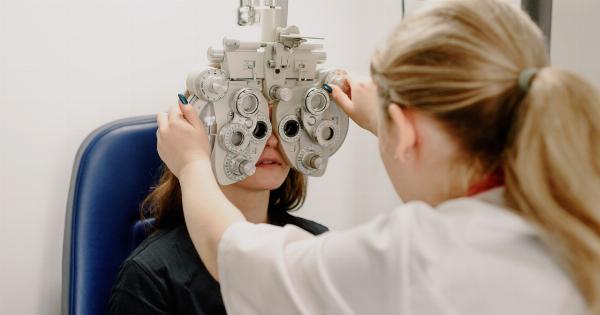Cholesterol is a type of fat that is essential for healthy body functioning. It is present in the cell membranes, hormones, and tissues of the body. However, when the cholesterol levels are high, they can pose significant health risks.
High cholesterol levels are linked to heart disease, stroke, and other health problems. While high cholesterol is usually asymptomatic, a routine blood test can indicate elevated cholesterol levels. Additionally, cholesterol deposits can be seen in the eyes, which can be an indication of high cholesterol levels.
This article will expound on how your eyes can reveal high cholesterol levels.
Cholesterol Deposits in the Eyes
Cholesterol deposits in the eyes are known as xanthelasma. Xanthelasma appears as yellowish plaques around the eyelids and are generally soft to the touch. The plaques usually form on the upper eyelids, near the nose.
However, they can appear anywhere on the eyelids or around the eye area.
Xanthelasma can occur in individuals with normal cholesterol levels, but they are more prevalent in people with elevated cholesterol levels.
They are mainly composed of cholesterol, and they develop due to the accumulation of low-density lipoprotein (LDL) cholesterol, commonly known as bad cholesterol, in the bloodstream. Xanthelasma is not a serious medical condition, but their presence may indicate elevated cholesterol levels that need to be addressed.
Other Eye Conditions Associated with High Cholesterol Levels
In addition to xanthelasma, high cholesterol levels can lead to several other eye conditions. These conditions include:.
- Corneal Arcus – Corneal arcus is a white ring that appears around the iris. It is common in older adults and is usually harmless. However, in younger adults, it may indicate elevated cholesterol levels.
- Retinal Vein Occlusion – Elevated levels of cholesterol can cause a blockage of the small veins in the retina, known as retinal vein occlusion. This condition can cause vision loss.
- Yellow Spot – A yellow spot on the retina, known as a Hollenhorst plaque, can indicate high cholesterol levels. The plaque is composed of a buildup of cholesterol in the arteries.
- Scattered Yellow Deposits – Small, yellow spots on the retina are known as drusen. While they are typically harmless, they can indicate high cholesterol levels.
The Importance of Regular Eye Exams
Regular eye exams are an essential part of overall health. Eye exams can detect not only vision changes but can also spot early signs of medical problems, including high cholesterol.
An eye exam can reveal cholesterol deposits in the eyes and other eye conditions associated with high cholesterol levels. Early detection of cholesterol deposits in the eyes can prompt early intervention and provide an opportunity to address high cholesterol levels before potentially serious complications arise.
Managing High Cholesterol Levels
The first line of treatment for high cholesterol levels is lifestyle modifications. Making changes to diet and exercise habits can reduce cholesterol levels significantly.
Eating foods rich in soluble fiber, such as oats, fruits, and vegetables, can help lower cholesterol levels. Avoiding foods high in saturated and trans fats, such as fried foods and baked goods, can also help. Additionally, engaging in regular physical activity can help lower cholesterol levels.
Individuals with high cholesterol levels may also require medication to lower their cholesterol levels. Statin drugs can reduce cholesterol levels by blocking the production of cholesterol in the liver.
Other medications, such as bile acid sequestrants and niacin, can also help lower cholesterol levels.
Conclusion
Elevated cholesterol levels pose several health risks, including heart disease, stroke, and other health problems. While high cholesterol is usually asymptomatic, it can manifest in the eyes.
Cholesterol deposits in the eyes can be an indication of high cholesterol levels. Regular eye exams are essential in detecting cholesterol deposits in the eyes and other eye conditions associated with high cholesterol levels.
Early detection and management of high cholesterol levels can help prevent potentially serious complications.



























